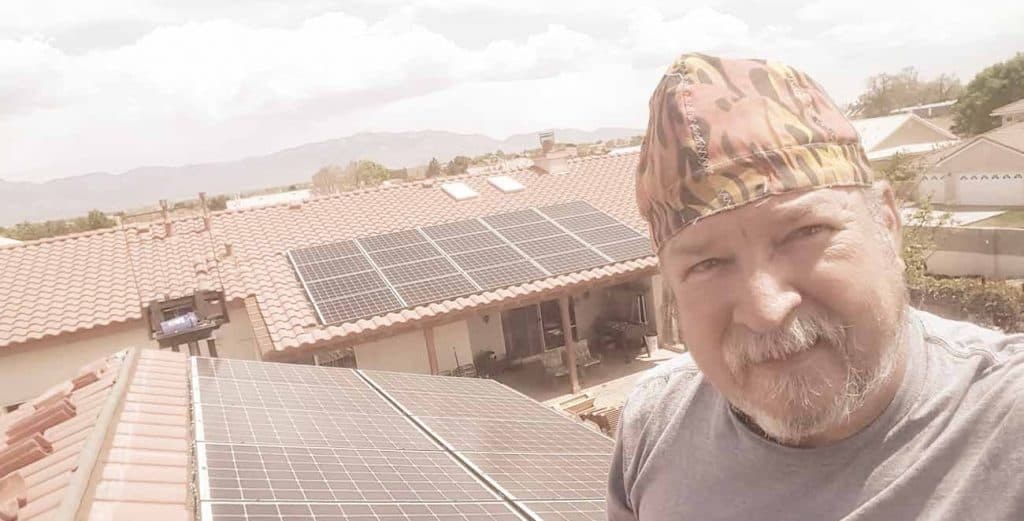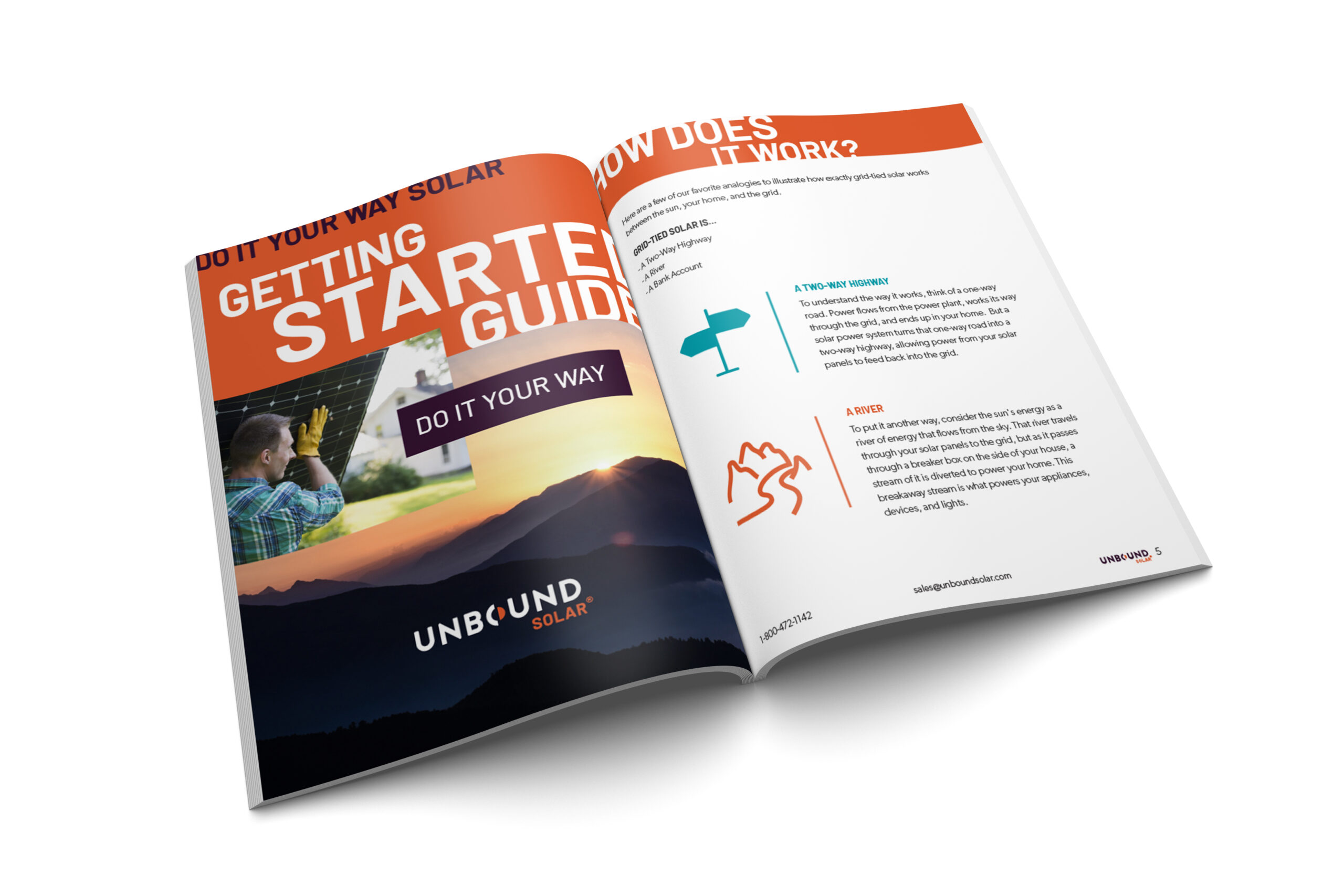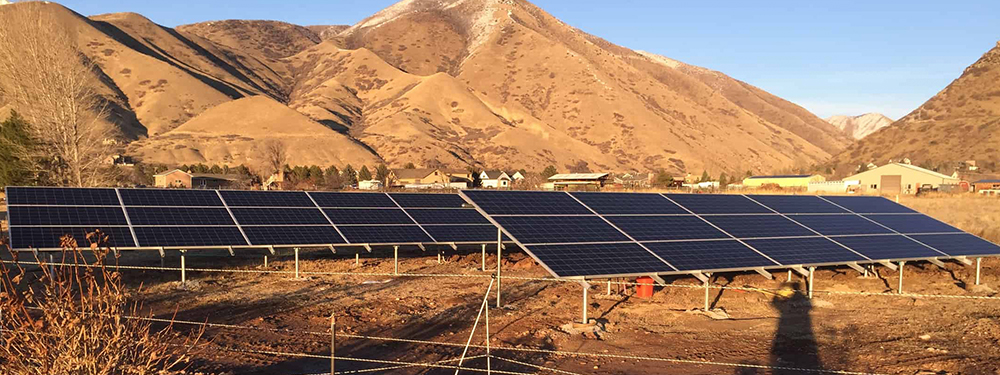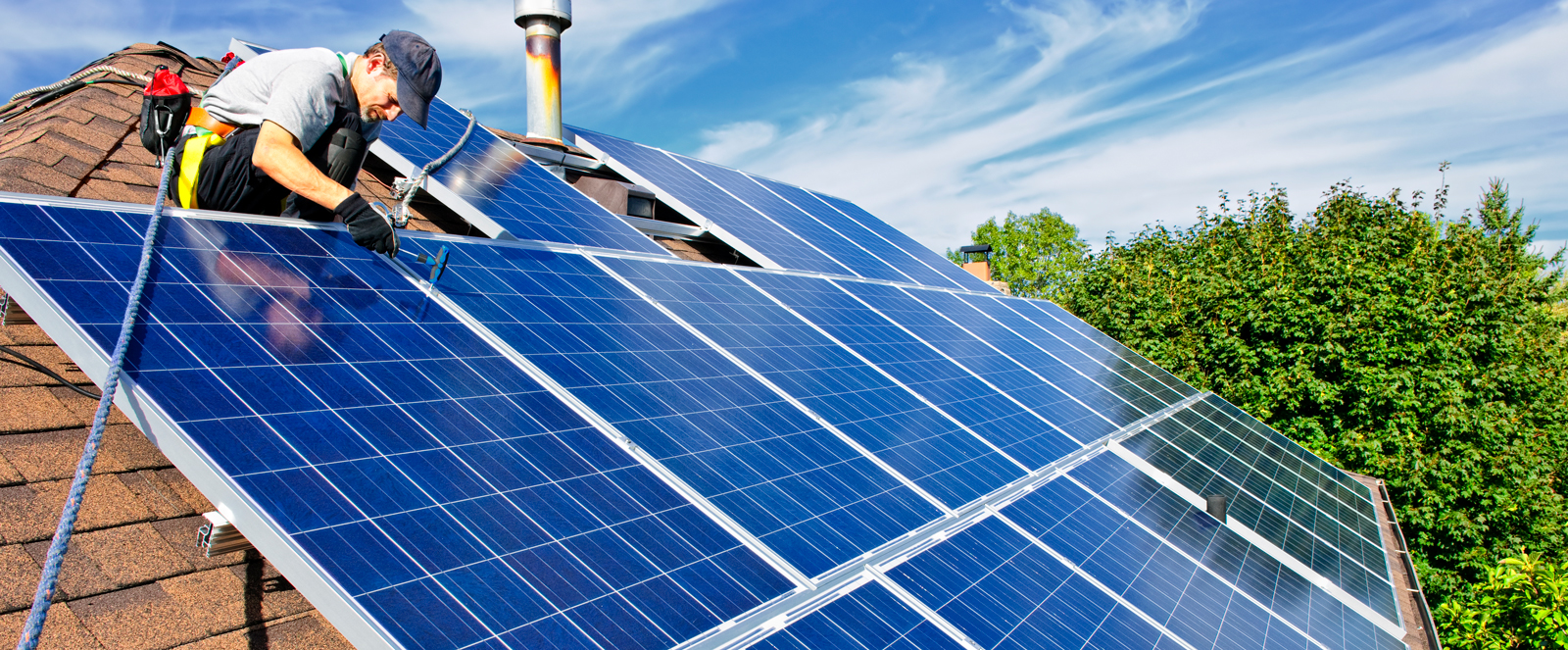Investing in a solar system is a smart solution for homeowners. The latest solar panels and photovoltaic (PV) systems are easy to install, maintain, and operate, with long-term performance and energy savings.
To make the most of your grid-tie solar system, you’ll want to know how to correctly size the system to cover your energy use patterns without over-sizing your PV array.
Follow these steps to learn how to get a sizing estimate, calculate your solar needs, and select the right panels to get the most benefit out of your solar installation.
The process for sizing off-grid solar systems is different, due to the need to account for battery bank sizing. Click here for advice on how to size your off-grid solar system.
Getting Started with Solar System Sizing
Before you begin to size a solar system, you’ll want to figure out the main constraints on the project and use those restrictions as the starting point for the design. You can approach the project from one of three angles:
- Budget constraints: Build a system within your target budget.
- Space constraints: Build a system that is as space-efficient as possible.
- Energy offset: Build a system that offsets a certain percentage of your energy usage.
Take into consideration other sizing factors and common stumbling blocks that may impact how to size a solar system:
- Local levels of sun exposure
Orientation of the array (tilt angle)- Plans for future expansion
- Product efficiency ratings
- Natural degradation of performance over the life of the warranty
Once you’ve assessed your solar needs and established your approach to design, follow these steps to size a grid-tied solar system.
Estimating of Your Energy Usage
Before you begin to size a solar system, follow these steps to determine your home’s average electricity consumption and PV needs:
1. Calculate Your kWh Usage
- Gather the kilowatt-hours (kWh) usage from your electric bill. You’ll want to have full 12 months of usage to be able to look at peaks and valleys in usage over a year. Energy consumption spikes in the summer and winter with heavy use of your A/C and heating units.
- Determine your average monthly kWh usage. Add up your kWh usage for 12 months and divide by 12 to figure out your average monthly consumption. Your grid-tied system will tend to overproduce in the summer with peak sun exposure.
- Figure your daily kWh usage. Divide by 30 to determine your daily kWh usage.
To determine your home’s energy usage more accurately, use our home appliances power consumption table to find out how many kWh your appliances would use per month.
If your utility provides a favorable net metering policy, the energy your system generates can be banked with the utility as a credit that can be used later. Not all utility companies give you credit; check with your local provider.
2. Look Up Your Peak Sun Hours
Average peak sun hours vary greatly depending on your location and local climate. You’ll want to determine how may peak hours of sunlight you’ll get so you can make the most of the solar power:
- Look up your peak sun hours, through a sun hours chart to determine the number of hours per day the sun produces peak sunlight.
- Find the nearest city to you and write down the daily average of peak sun hours.
3. Calculate the Size of Your Solar System
To figure out how to size your solar system, take your daily kWh energy requirement and divide it by your peak sun hours to get the kW output. Then divide the kW output by your panel’s efficiency to get the estimated number of solar panels you’ll need for your system.
(Daily kWh ÷ average sun hours) x 1.15 efficiency factor = DC solar system size
For example, if you live in New Mexico, you average six peak sunlight hours per day. You’ll need 6.2 kW DC according to the formula:
(33 kWh ÷ 6.1 sun hours) x 1.15 efficiency factor = 6.2 kW DC solar system size required
Using the example above with a 6.2 kW DC system, you can multiply this number by 1,000 to confirm that you need 6,200 watts of solar panels.
6.2 kW x 1000 (convert to watts) = 6200 watts solar panel required
Fine-Tuning the Estimated System Design
To make the solar system sizing estimate as accurate as possible, you’ll also want to take into account the type of roof mount you’ll need, the direction your panels will face, and the appropriate size panels to fit your design.
1. Select Your Mount Type
A roof mount is the simplest and most cost-effective solution since it costs less than other racks. To determine if you can use a roof mount:
- Pull up the address on Google Maps. Check to see if you have any viable south-facing options for a roof mount. If the solar array cannot face south, on the preferred angle, you’ll need to adjust the system by adding more solar.Your solar system should point toward the equator, so if you live in the Southern Hemisphere, look for north-facing options instead. Often the slope of the roof is already set up for solar gain, and it keeps the solar panels close to the inverter and service panel. This results in greater efficiency and costs less in conduit and wire.
2. If a roof mount is not an option, look into a ground mount or pole-mounted solution. On the flat ground, you can position solar panels in any direction you want to maximize sun exposure, unlike on a slanted roof.
To learn more about the pros and cons of each mount type, read this article: Ground Mount vs. Roof-Mount Racking: What’s the Best Way To Mount My Solar Panels?

2. Choose the Right Solar Panels
If you have a small or odd-shaped roof, solar panel size is an important consideration when deciding on the size of a solar system. Take these factors into account:
- With a large usable roof area, you can buy more larger panels (at a lower cost per panel) to get to your target energy output.
- If your usable roof area is limited or partially shaded, using fewer smaller high efficiency panels will ultimately be the most cost-effective, long-term solution. You can add more panels later on to accommodate increased energy needs.
3. Calculate Solar System Output
Once you know how much area you have for solar panels, and what angles and direction you will be working with, use a PV watts calculator to figure out how much power your system will put out on a monthly basis:
- Enter the address and hit the orange arrow to the right.
- Once you are on the System Info page, enter the DC system size from the previous section.
- Choose a standard module.
- For array type, select “fixed” for roof mounts, or “open” for ground mounts.
- Leave the system losses at around 15%.
- Enter the slope of your roof in degrees, and the azimuth. Azimuth is the degrees relating to north and south, with north being zero and south being 180. (Click here to learn how to fine-tune your angle and azimuth values.)
Click the arrow to the right to show your monthly solar system output. Once you know what size solar system you need and system output, you can cross-reference that with the amount of space available to fine-tune your solar system sizing assessment.
Choosing Grid-Tie Solar Equipment
A fast resource for selecting your grid-tie solar is through our grid-tied solar packages. Here are a few viable options to consider after you size a solar system. Note that the imported panels are more cost-effective, so you get roughly 10% more production for the same price.
Grid-tie systems with American-made panels:
- 6.2 kW system with 310W Mission Solar panels and SolarEdge inverter/optimizers
- 6.2 kW system with 310W Mission Solar panels and Enphase IQ7+ micro-inverters
- 6.2 kW system with 310W Mission Solar panels and SMA central inverter
Grid-tie systems with imported panels:
- 6.7 kW system with 335W Astronergy solar panels and SolarEdge inverter/optimizers
- 6.7 kW system with 335W Astronergy solar panels and Enphase IQ7+ micro-inverters
- 6.7 kW system with 335W Astronergy solar panels and SMA central inverter
If you’re having trouble deciding which products to buy, check out these articles covering that ground as well:
Of course, sometimes it’s easier to talk to someone with experience and have them walk you through the design process. The fastest way to get a thorough evaluation of your solar needs is to call us at 1-800-472-1142 and connect with one of our designers. We’d love to help you design the perfect grid-tied system for your needs.
Need Help with Solar System Sizing?
Of course, sometimes it’s easier to talk to an expert who knows how to size a solar system and can walk you through the design process. Once you’re ready, we do encourage you to schedule a free design consultation with us so that we can double-check your sizing, find compatible products, and ensure the system works within your constraints (budget, build space, and energy offset).
The fastest way to get a thorough evaluation of your solar needs is to call us at 1-800-472-1142 and connect with one of our designers. We’d love to help you design the perfect grid-tied system to meet your solar requirements.




